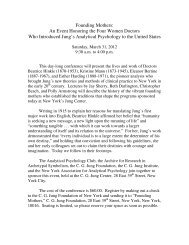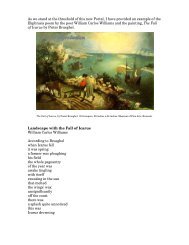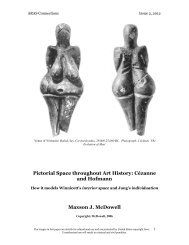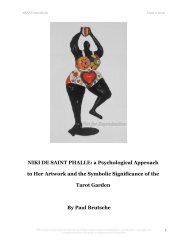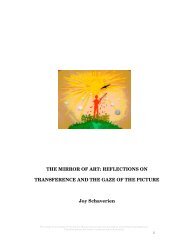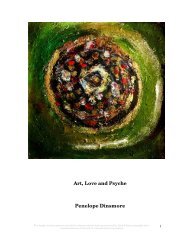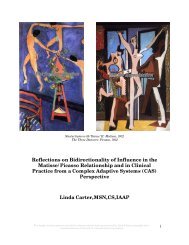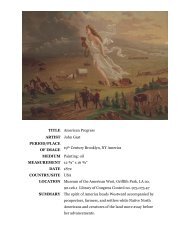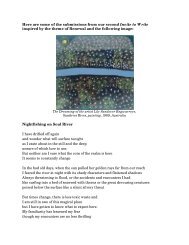The Mandala in Tibetan Buddhism by Martin Brauen - ARAS
The Mandala in Tibetan Buddhism by Martin Brauen - ARAS
The Mandala in Tibetan Buddhism by Martin Brauen - ARAS
You also want an ePaper? Increase the reach of your titles
YUMPU automatically turns print PDFs into web optimized ePapers that Google loves.
protection were still not enough, around every mandala a circular fire blazes to<br />
keep all negative forces far away from the <strong>in</strong>side of the mandala.<br />
In a relatively large number of mandalas a fourth circle <strong>in</strong> which the eight<br />
charnel grounds are depicted, is added to the first three. Each charnel ground<br />
conta<strong>in</strong>s the same basic elements: a mahāsiddha (yog<strong>in</strong>), āk<strong>in</strong>ī, protective deity,<br />
stūpa, tree, cloud, forest, hermit, ocean, mounta<strong>in</strong>, and naga. Such<br />
representations of charnel grounds rem<strong>in</strong>d the person meditat<strong>in</strong>g of the<br />
transitor<strong>in</strong>ess of all existence. For is there any place more suitable than a charnel<br />
ground to meditate on the fleet<strong>in</strong>g nature of existence? That <strong>in</strong> early mandalas<br />
these charnel ground scenes were not depicted <strong>in</strong> a separate circle but <strong>in</strong> the<br />
whole area outside the mandala is <strong>in</strong>dicated <strong>by</strong> a Cakrasamvara <strong>Mandala</strong><br />
ascribed to the twelfth century, <strong>in</strong> <strong>The</strong> Metropolitan Museum of Art.<br />
Other mandalas<br />
Numerous scroll pa<strong>in</strong>t<strong>in</strong>gs depict mandalas that are not recognizable as<br />
such at first sight. <strong>The</strong> characteristic type of mandala <strong>in</strong> such pa<strong>in</strong>t<strong>in</strong>gs becomes<br />
clear when the pa<strong>in</strong>t<strong>in</strong>gs are analyzed, and the mandalas are there<strong>by</strong> revealed as<br />
three-dimensional, symmetrical structures, concentrated about a center.<br />
Even the <strong>in</strong>dividual deity can appear as a mandala: thus Kālacakra<br />
dom<strong>in</strong>ates the mandala of the same name. Like his partner Viśvamātr he has<br />
four faces, each look<strong>in</strong>g toward one of the four card<strong>in</strong>al directions. His arms,<br />
together with those of his partner, describe a circle about an (imag<strong>in</strong>ed) center at<br />
the level of the heart.<br />
Eventually, <strong>in</strong> the context of the picture of the person <strong>in</strong> the Kālacakra<br />
Tantra, we shall f<strong>in</strong>d out that the human be<strong>in</strong>g, too, is seen as a mandala. For<br />
<strong>The</strong> images <strong>in</strong> this paper are strictly for educational use and are protected <strong>by</strong> United States copyright laws. Unauthorized<br />
use will result <strong>in</strong> crim<strong>in</strong>al and civil penalties.<br />
6



